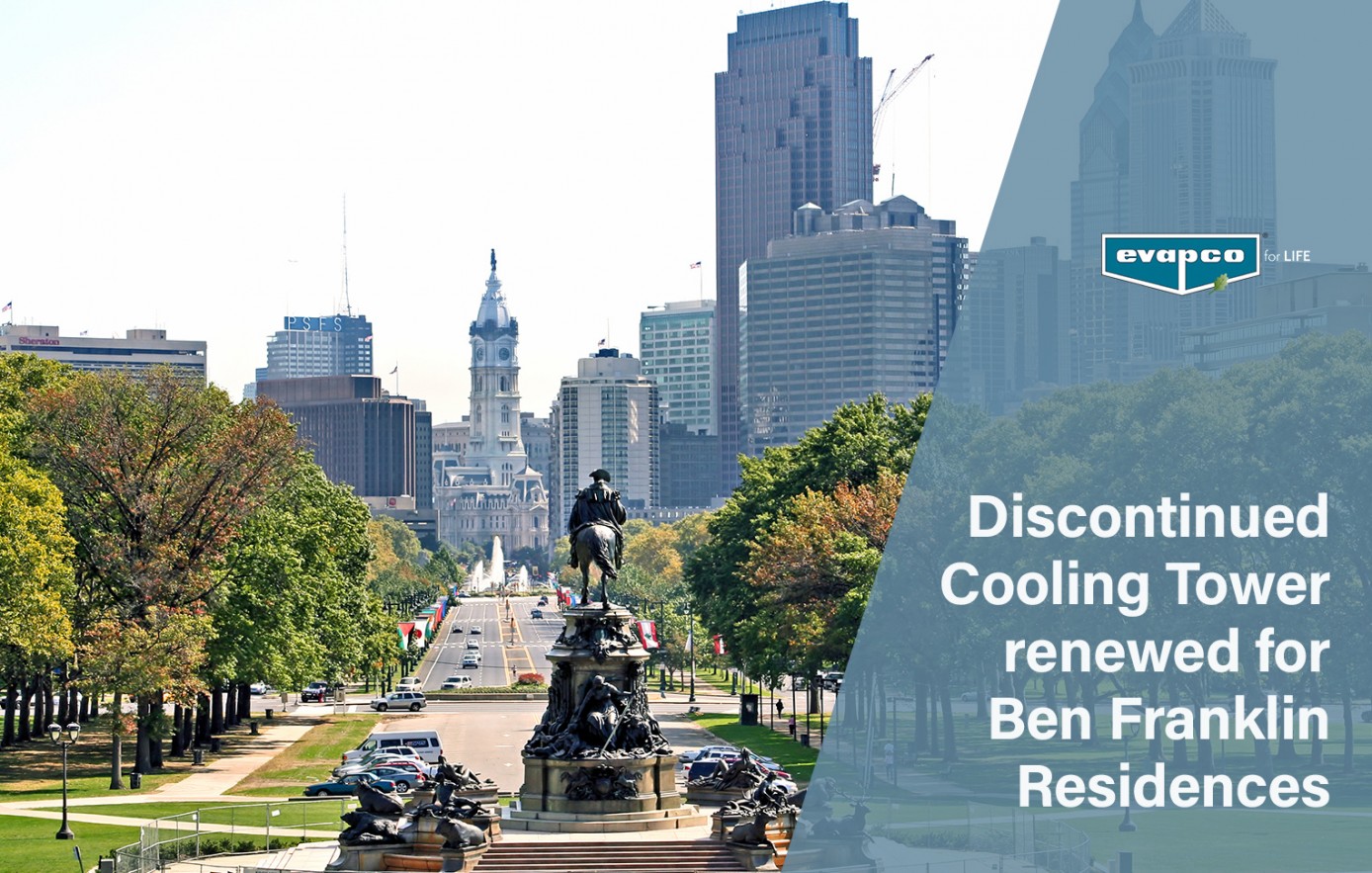
Discontinued cooling tower renewed at Ben Franklin Building

The Ben Franklin Building in Philadelphia stands as a famous historical building. Also called The Franklin Residences, it offers luxury apartments and short-term rental suites. Keeping it running in top shape is a priority for the current owners, Korman Communities.
Luxury cooling
Keeping tenants and guests comfortable during warm, humid summers takes the right systems working with minimal or no downtime. The cooling tower serves as a water-sourced heat pump loop in the building. For years, it served most of the building’s cooling needs.
“Some equipment loses efficiency as it gets older,” explained Mike McCauley from mechanical contractor Elliott-Lewis Corporation. “Demands change and we have warmer summers now. That’s taxing on older equipment. Even with the best maintenance it still won’t be as efficient as it was.”
Unfortunately, an increased demand did not come with increased floor space for another cooling tower, or larger one. The owners challenge: how to get more cooling capacity using the same footprint?
An updated version
When the older cooling tower was built there were no certifications or ASHRAE 90.1 requirements. Replacing the cooling tower with requirements, same footprint and greater capacity was the top challenge.
The original unit was a discontinued EVAPCO PMTQ cooling tower. But that didn’t stop EVAPCO from retrieving the archived design and building one to meet the requirements with a sharply increased cooling demand in the same footprint.
“One unique feature is EVAPCO’s super low sound fan, which isn’t the typical centrifugals you’d see on a forced draft” said Casey Younkins, Director of Sales for Energy Transfer Solutions, representative for EVAPCO on this project. “Being in the middle of densely-populated Philadelphia with office buildings and residences around, there are noise concerns. We needed the quietest fan available.”
The unit is built with four fans with 60 horsepower, up from the original 40. Now more energy efficient, each fan is driven by a variable frequency drive controlled to run at part loads—rather than cycling on and off when the demand decreases.
Stainless steel construction replaced the original galvanized material, ensuring durability and a long lifespan—a concern raised by the building’s owners.
“Because EVAPCO was able to recreate their discontinued model to meet the exact requirements of this project, the installation went smoothly,” Younkins said.
Learn more about our great products